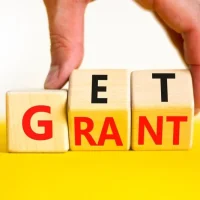The grant application process can often seem daunting, particularly for those new to the world of funding opportunities. At its core, this process involves several key steps that require careful attention to detail and a clear understanding of the requirements set forth by the funding organization. Initially, applicants must identify the specific grant they wish to pursue, which involves not only understanding the goals of the grant but also aligning them with their own project objectives.
This alignment is crucial, as funding organizations typically seek to support initiatives that resonate with their mission and vision. Once a suitable grant has been identified, applicants must familiarize themselves with the application guidelines. These guidelines often include eligibility criteria, submission deadlines, and specific documentation requirements.
It is essential to read these instructions thoroughly, as failure to comply with any aspect can result in disqualification. Additionally, many organizations provide resources such as webinars or FAQs that can offer valuable insights into the application process. Understanding these nuances can significantly enhance an applicant’s chances of success.
Researching Available Grants for Educational Initiatives
Researching available grants for educational initiatives requires a strategic approach to ensure that the right opportunities are identified. Various sources can be tapped into for this purpose, including government websites, private foundations, and nonprofit organizations dedicated to educational advancement. For instance, the U.S. Department of Education regularly publishes grant opportunities aimed at improving educational outcomes across various demographics. Similarly, organizations like the Bill & Melinda Gates Foundation focus on innovative educational projects that aim to close achievement gaps. In addition to traditional sources, online databases such as Grants.gov and Foundation Center provide comprehensive listings of available grants. These platforms allow users to filter opportunities based on specific criteria such as funding amount, eligibility, and project type. Furthermore, networking within educational circles can yield valuable information about upcoming grants that may not be widely advertised. Engaging with professional associations or attending conferences can facilitate connections with individuals who have successfully navigated the grant landscape and can offer insights into lesser-known funding opportunities.
Writing a Compelling Grant Proposal
Crafting a compelling grant proposal is an art that combines persuasive writing with factual evidence and strategic planning. The proposal must clearly articulate the project’s goals, objectives, and anticipated outcomes while demonstrating how these align with the funder’s priorities. A well-structured proposal typically includes an executive summary, a statement of need, project description, evaluation plan, and a budget narrative.
Each section plays a critical role in painting a comprehensive picture of the initiative and its potential impact. In the statement of need, it is vital to present data and anecdotes that highlight the urgency of the issue being addressed. For example, if the proposal focuses on improving literacy rates among underprivileged children, including statistics on current literacy levels in the target demographic can underscore the necessity of the project.
Additionally, incorporating testimonials from community members or educators can add a personal touch that resonates with reviewers. The project description should outline specific activities and timelines, providing a clear roadmap for implementation. This level of detail not only demonstrates preparedness but also instills confidence in funders regarding the applicant’s ability to execute the proposed plan effectively.
Budgeting and Financial Planning for Grant Funds
Budgeting and financial planning are critical components of any grant proposal, as they provide funders with a clear understanding of how their money will be utilized. A well-prepared budget should include all anticipated expenses related to the project, such as personnel costs, materials, travel expenses, and indirect costs. It is essential to be as detailed as possible; vague estimates can raise red flags for reviewers who may question the applicant’s financial acumen or commitment to transparency.
Moreover, it is important to justify each line item in the budget narrative. For instance, if requesting funds for educational materials, providing a breakdown of costs along with explanations for why these materials are necessary can strengthen the proposal. Additionally, applicants should consider including matching funds or in-kind contributions from other sources to demonstrate community support and commitment to the project.
This not only enhances credibility but also shows funders that the initiative has broader backing beyond their financial contribution.
Submitting the Grant Application
The submission phase of the grant application process is often where applicants feel the most pressure. Ensuring that all components of the application are complete and submitted on time is paramount. Many funding organizations utilize online portals for submissions, which may require creating an account and familiarizing oneself with their specific submission guidelines.
It is advisable to start this process well in advance of the deadline to avoid last-minute technical issues or oversights. Before hitting the submit button, conducting a thorough review of the entire application is essential. This includes checking for grammatical errors, ensuring that all required documents are attached, and confirming that the proposal adheres to any formatting guidelines specified by the funder.
Some organizations may even require letters of support or additional documentation that should be prepared ahead of time. A meticulous approach during this stage can significantly enhance an applicant’s chances of making a positive impression on reviewers.
Following Up and Reporting on Grant Funds Utilization
After submitting a grant application, it is crucial to maintain communication with the funding organization. Following up can demonstrate professionalism and continued interest in the grant opportunity. Many organizations appreciate applicants who take initiative in this regard; however, it is important to respect any timelines provided by the funder regarding when applicants can expect feedback or decisions.
Once a grant has been awarded, recipients must adhere to reporting requirements set forth by the funding organization. This often includes periodic updates on project progress and financial expenditures. Providing detailed reports not only fulfills contractual obligations but also builds trust with funders for future collaborations.
Recipients should document successes and challenges encountered during implementation, as this information can be invaluable for both internal assessments and future grant applications. By maintaining transparency and accountability throughout the grant lifecycle, organizations can foster long-term relationships with funders that may lead to additional support in subsequent years.









































